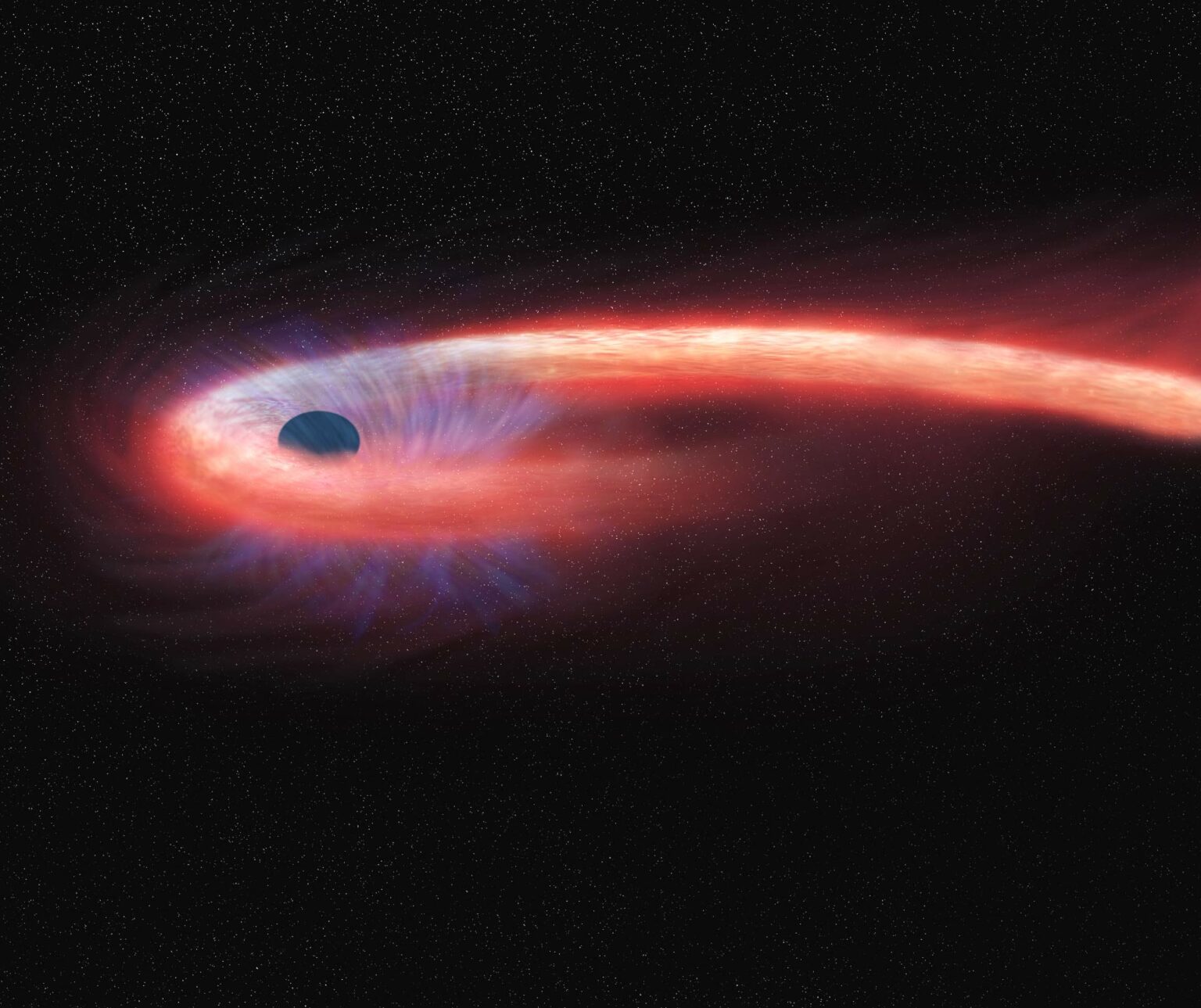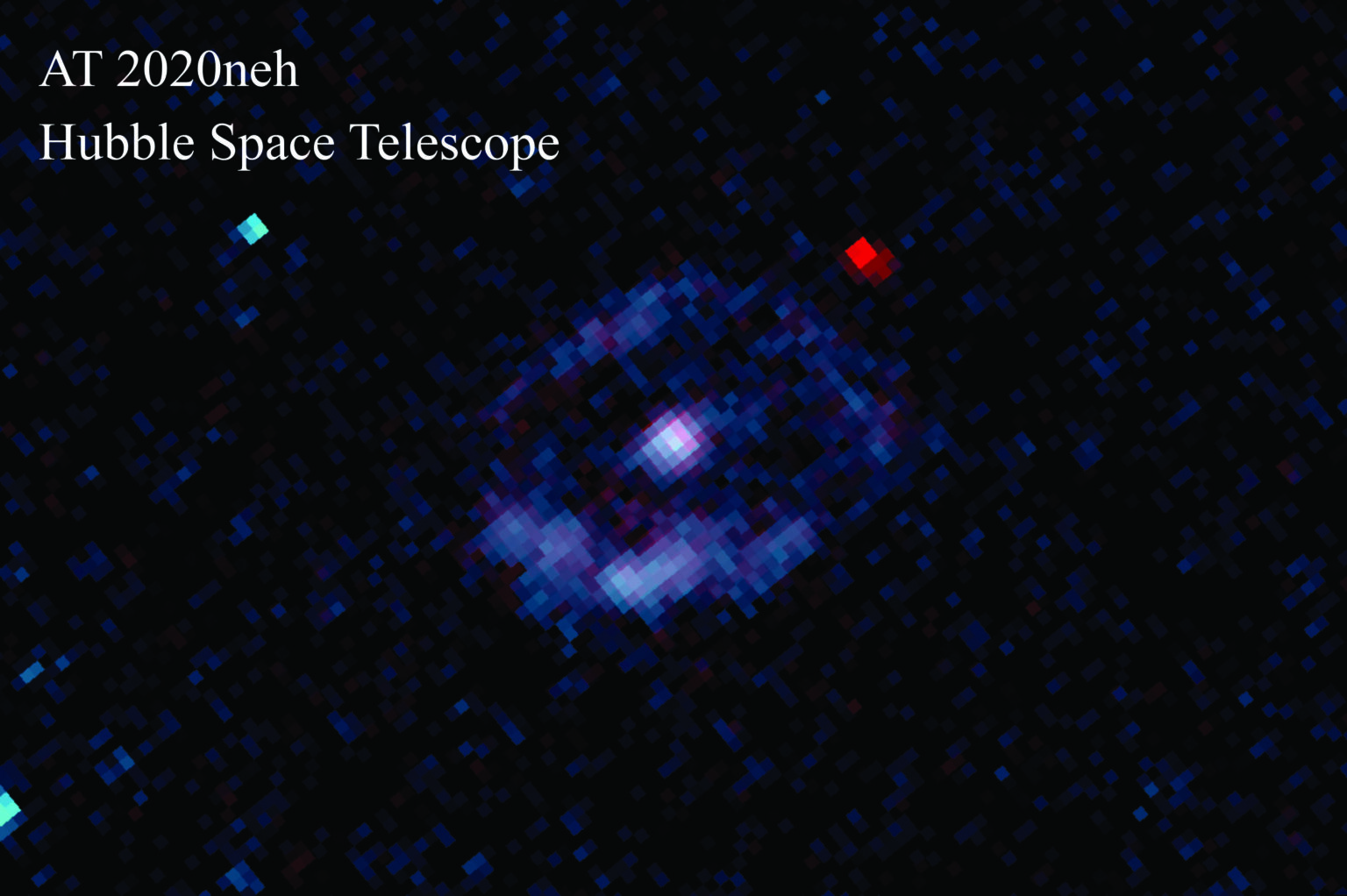A new intermediate-mass black hole has been found in a distant dwarf galaxy. This was achieved due to the fact that it tore into pieces and absorbed the star that happened to it on the way. Scientists hope that this event will help to understand the evolution of the largest objects in the Universe.

A black hole tore apart a star
An international team of scientists has found an intermediate-mass black hole in a dwarf galaxy. This happened during the implementation of the Young Supernova Experiment scientific program. The purpose of the program is to identify numerous supernova flares and other short-term cosmic events.
One of them attracted the attention of researchers for its shortness and brightness, despite the fact that it happened very far away. Researchers are sure that they have seen a black hole tearing a star to pieces. It was a rather unusual object of intermediate mass.
Stellar-mass black holes are well known to scientists. They are usually seen when these objects tens of times heavier than the Sun form pairs with ordinary luminaries. Their supermassive relatives living in the centers of large galaxies have also been studied quite well. But something in the middle is extremely rare to see.

Intermediate-mass black hole and the evolution of the Universe
Why an intermediate-mass black hole is such a rare phenomenon is connected with one of the main mysteries of the evolution of these types of objects. Now most black holes are formed as a result of supernova flares, which are studied by the Young Supernova Experiment program. But how supermassive monsters are formed, which we can clearly see when they absorb gas and dust, we have never seen.
One possibility is that they are formed due to the merger of stellar-mass black holes. However, then there must be many objects of intermediate mass, which for some reason we do not see.
The theory explaining the absence of intermediate-mass black holes is that this image of the evolution of the universe is incorrect. In this case, the embryos of supermassive black holes were formed during the first hundreds of millions of years of the universe’s existence by the direct collapse of gas clouds.
However, an alternative explanation for why an intermediate-mass black hole is hiding from us is quite possible. They may not simultaneously form close and long-lasting pairs with stars and simultaneously absorb little matter so that we can see their jets and accretion disks.
Why are dwarf galaxies important?
The possibility that intermediate-mass black holes may simply be hiding from us implies another possible picture of the first billion years of the Universe’s existence. In it, it was filled with dwarf galaxies, each of which contained an average-mass singularity.
Later, most of them merged to form large galaxies similar to the Milky Way. But a lot of these dwarfs survived. And then each of them must contain at least one of these intangible objects.
But so far, scientists know only a few of them. Perhaps it is such rare events as the destruction of oncoming stars that will help to establish whether all dwarf galaxies really contain them. This would be a great clue for solving one of the biggest mysteries of black holes.
According to phys.org
Follow us on Twitter to get the most interesting space news in time
https://twitter.com/ust_magazine
